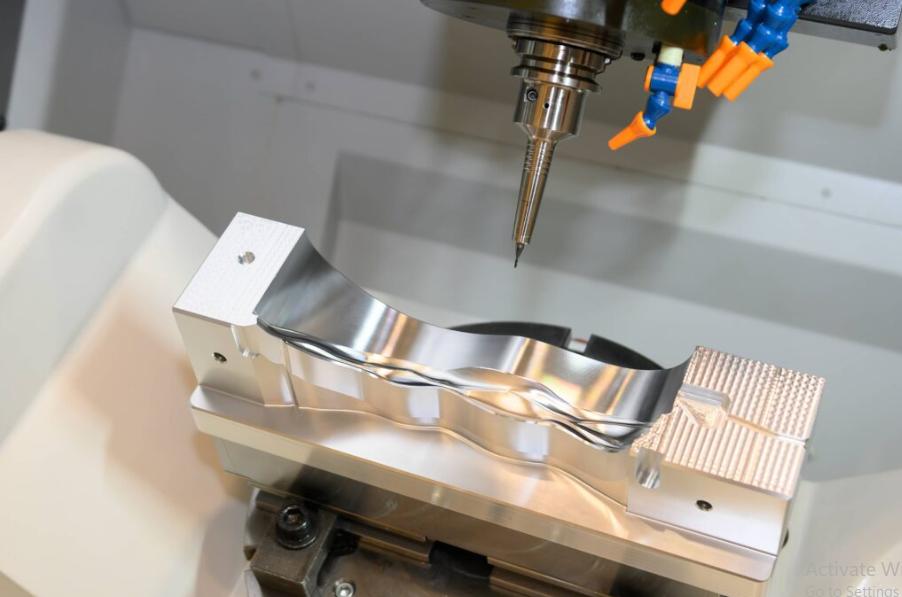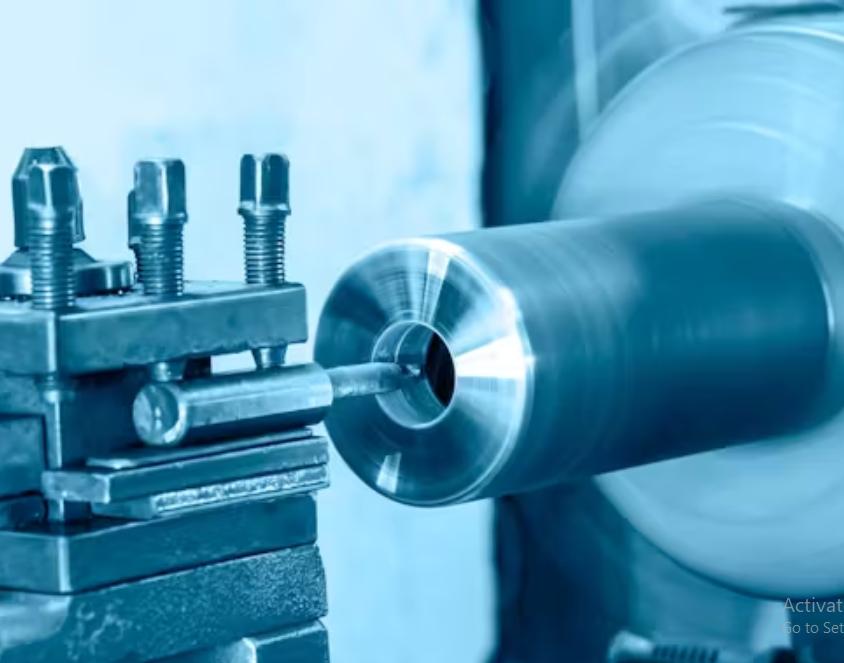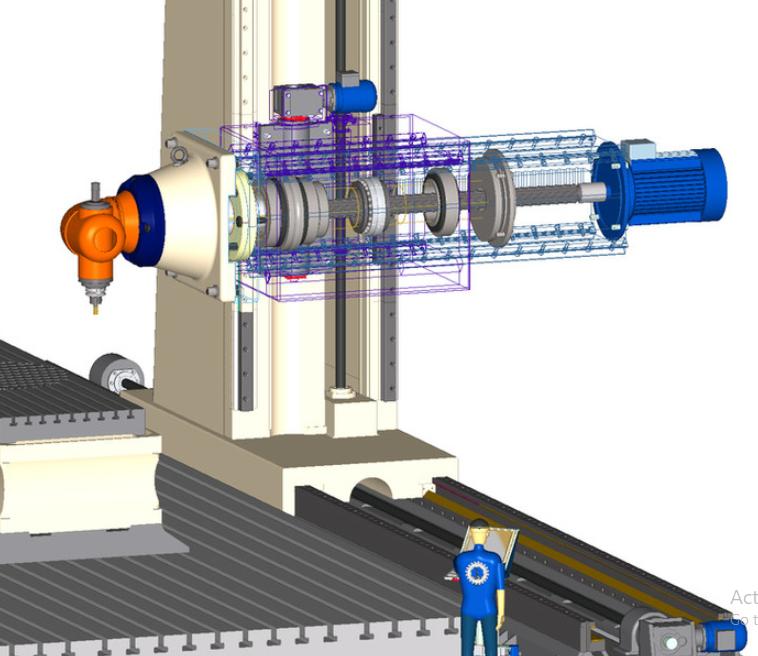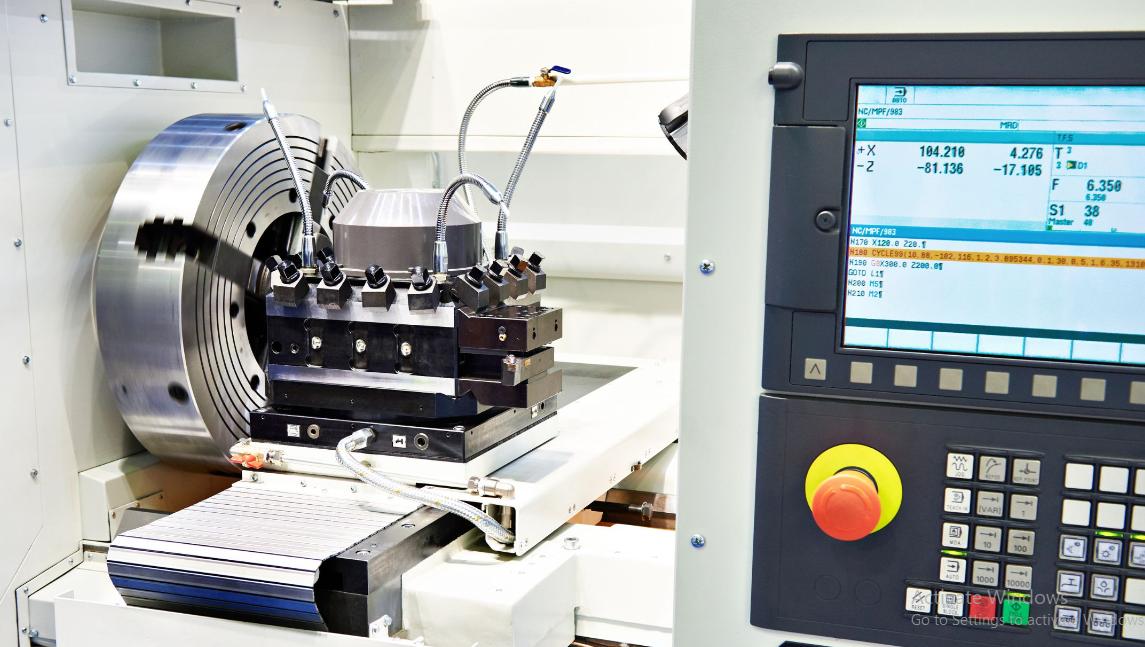The entire world of CNC boring machine technology discovery takes an important role where perfection is the key. Inside of the factory, these fully automated machines are the ones that will take those initial unfinished things and turn them into complex components completed with extraordinary precision. This guide takes a dive into some tricky areas such as selecting the right tool, ensuring the proper placement of your workpiece and even some advanced techniques.
This comprehensive guide to CNC boring mills injects a dose of both the necessary technical knowledge and smart operational tips to ensure you are well equipped to deal with CNC boring mills' intricacies. The range of these techniques is quite exemplary: from spindle alignment to removing finishes, cutting is a craft where one perfect cut depends on the other.

The ongoing advancements in CNC boring mill has led to a revolution in the fourth industrial manufacturing era. The process once done by machines is becoming more and more automated, the accuracy and speed delivered is incomparable.
These CNC boring mills benefit from the integration of high level software and multi-caliber capabilities and are therefore the best machinery to handle complex machining work easily.
The whole story of the history of manufacturing process has been followed from this consisting future of the industries that add quality to their manufactured parts with much saving in their time and material wastage. This development is believed to be the most significant invention in the production machinery.

The spindle was a major feathering of the cutting tools rotation with precision. The characteristics of high-performance motors include speed and torque accuracy, enabling drilling of holes with precisely pinpointed dimensions. This portion has significant impact on the quality of the product particularly end result.
The board is used to clamp workpieces while in process cutting. It can be installed in horizontal or different orientations, thus guaranteeing the requisite adjustments in the workpiece feeding and the accurate positioning of material through spindle.
The chuck serves to maintain the work in a manner that is consistent and fastens the workpiece firmly on CNC boring mill. It can switch the jaws to accommodate different sizes, which then remains to fit small military industry materials needed for close tolerance machining operations. This component is the most basic step to achieve any successful operations without slippage or misalignment.
Axis implies the position of the table or tool by which it could be magnified or diminished. In this process, five axes (X, Y, Z, and etc.) are able to accomplish complex cuts and shapes in the workshop. In other words, highly exacting positional character offers the CNC methods their ability to perform operations that range from simple to complex.
The control panel is the front face of CNC boring mill from the user perspective. It permits the operator to enter machining orders, and set parameters thereby managing machine's action. This panel is the brain of the whole machine which nods to the complicated programming in order to complete machining processes which are intricate or delicate.
CNC bored ideally keeps the temperature of machining by a cooling system. It performs this function by running a coolant fluid through the heat generating part cooling section in order to avoid the workpiece overheating, tool without cutting short service time or workpiece strength. This kind of system is necessary for velocity law of survival, preventing from heating distortion.
CNC senses are quite good in machining big pieces. Designs are chosen based on their ability to go to the lengthwise extent, enabling the placing of large objects. Very important for these industries that need machines with great rigidity and side stability, they possess powerful spindle units and stable work tables. It is most sought after for industrial automation applications due to its reliability and ability to perform heavy-duty machining operations.
CNC vertical boring mills are equipped with a vertically oriented spindle and geared towards drilling deep holes. www.dailywordfluency.com Compact design makes them ideal for squeezing the Little Spaces out. On one hand, industries fulfill their precise needs in the manufacture of parts with a vertical orientation, on the other hand are applicable for complex operations.
With the revolving table, the machine endows the mills with the added flexibility and possibilities of machining angles. In particular, the multi-faceted can be machined with good result. Industries making use of precision in production of complex geometries find this particular type very useful. Its automatic system of positioning workpieces is a great advantage to perform very intricate machinery tasks.
In CNC floor boring mills machine tools are designed for the largest workpiece, however the capacity of the big machines down the X and Y axes. This design offers flexibility and convenience in case much larger sized components are involved. They are mainly the sector of interest in sectors like aerospace and energy, and precision in making huge and accurate parts simultaneously is the key to their importance.
|
Feature |
Horizontal CNC Boring Mills |
Vertical CNC Boring Mills |
Table CNC Boring Mills |
Floor CNC Boring Mills |
|
Axis Orientation |
X, Y, Z (horizontal) |
Z (vertical) |
X, Y, Z (horizontal) |
X, Y, Z, W (horizontal) |
|
Spindle Alignment |
Parallel to worktable |
Perpendicular to table |
Parallel to worktable |
Parallel to worktable |
|
Workpiece Movement |
Fixed workpiece |
Fixed or rotating table |
Rotating table |
Fixed or moving floor |
|
Max Workpiece Size |
Medium to large |
Small to medium |
Large |
Very large |
|
Precision |
High (0.005 mm) |
Moderate (0.01 mm) |
High (0.005 mm) |
Moderate-High (0.007 mm) |
|
Common Applications |
Aerospace, automotive |
Die and mold making |
Heavy machinery |
Shipbuilding, large parts |
|
Advantages |
High torque, stability |
Accessible for setup |
Flexibility with table |
Handle oversized parts |
Table on Types of CNC Boring Mills!

Aluminum's strength combined with low weight and easy mach inability makes it a machine of choice for CNC boring mills. The latent heat transfer characteristic enables the use of high machining speeds requiring finishing rate that are also not compromised. As a crucial in aerospace engineering and automotive applications, it brings about efficiency and accuracy in terms of modeling.
The steel, a kind of metal with the fame for its hardness and durability, puts ordinary CNC boring machines to severe tests on their toughness. Iron-carbides are being aggressively machined with high-speed steel (HSS) cutting tools. They manufacture machinery and construction elements for the industry. The variety of its grades and hardness levels as well as ability to be applied in numerous areas is determined by great deal of its toughness and application.
Titanium, which impresses with much higher strength-to-weight ratio than other alloys, in turn means that we need very exact CNC mill operations. Its non insurability at high temperatures and corrosion resistance makes it look great for industries of aerospace and medical. Technologist should apply much cutter and parameters to deal with machining complexity.
The ready to machine properties and a low friction coefficient of brass, make it a preferred material for CNC manual milling. The most noteworthy example is in the components of electrical systems and consequently in the fittings. This feature- its softness- aids in quick selection machining and the maintenance of high precision in detailed parts.
Copper possesses thermal and electrical conductivity traced to all necessary steps involved in CNC boring mill processing. A key component made of electrical devices and heat exchangers, its softness requires its special handling to prevent deformation, whose suitability therefore adds carefully to precision and efficiency.
Properties of plastic spectrum offer numerous opportunities for CNC bored mills, ranging from rigidity to flexibility. There are different types of materials which are selected based on the application from biometrics devices to the consumer products including for example ABS, polycarbonate, and PTFE. Accommodation is such a necessity that the different types of materials need different machining techniques in order to obtain certain finishes and dimensions.
The error level during CNC boring mill operations has a significant influence on the setup accuracy. A precision method in which workpieces and tools are accurately positioned is required to facilitate perfect assembly. It is this level of accuracy that directly affects on the quality of machining; hence the exact setup (in terms of tools, machines, and materials) is an integral part of smooth and effective operation in all jobs.
Calibration of the CNC milling machine guarantees that the machine is operated within given tolerance limits frequent assessments correct for the deviations, so the machine runs accurately. This is the main process that is necessary for the integrity of the outcomes and high-quality matches of machine talents with the real-time functions of the plant.
Since the utilization of precise tool for each operation influences the efficiency of the CNC boring mill, the type of tool to be used in the CNC boring mill impacts the effectiveness of the machine. The determinants for the type of tool can be the hardness of the material you are cutting and its type. These tools, if adjusted well, produce efficiency, fewer wears, and best finished, which indicate their priceless role in the machining processes.
The process of center less grinding is crucial since the thread alignment determines the quality and accuracy of hole CNC drilling and boring operations. Indisputably, exact positioning is the key factor that guarantees that tools work correctly when being held relative to the workpiece and it also diminishes errors from taking place and part quality happens to improve.
Feed rate is that speed at which a tool moves on to material and that too at the CNC boring mill. A well-adjusted feed rate that provides sufficient smoothness helps in attaining good quality cutting speed prevents tool breakage and establishes uniform surface finish. Correct progression feed needs to be adjusted as per type material and tool type to achieve sufficient machining.
Spindle speed is used for adjusting rotation rate and cutting motion dynamics, affecting roundness and surface quality. Implementation of optimal speed settings allows for higher productivity and cut tool durability. This adjustment stands as a critical element in heat generating management process and machined part precision.
Choosing the appropriate drill bits for a CNC milling process stands for matching the material, the geometry, and surface-coating. The sharp tungsten carbide or high-speed steel improve the longevity and quality of the tool while in use. The final decision on drill bits to be used is very important for ensuring a good hole quality and positively affecting operations.
Jig boring barrels in CNC jig boring machines require fit of the workpiece material hardness and machining task. Grinding carbide or diamond bars are the ones that actually provide the accuracy when holes bigger and surfaces are finished. Quality means the right choice guarantees the capacity of the parts to fit, as well as desired surface finish, overall emphasizing the role of CNC milling in product precision.
Face mills are of great importance to the bore finesse in a CNC boring mill. What is important is that the tooth number, tooth shape, and the material of inserts determine the removal rate and the quality of the finish greatly. Optimal face mills boost productivity and surface finish standards, implying their vast worthiness in obtaining the best of the mills.
CNC boring mills cutting tool selection includes end mills, and their material, length of flute, and coating affect greatly the efficiency of these machines. The millennium artists have a wide range of roles - from coarse to perfect. The selected end mills promote precision, efficiency, and tool life or machining, thus proving their multipurpose nature in CNC machining processes. Thus, these machined components are created that match the design tolerances.

In workpiece clamps, CNC boring mills make fastening and stability of the workpieces when machining possible. Adaptive pressure of these gears to different sizing and shapes is part of what is responsible for their constant functioning. The main function of clamps is to stop the movement of the workpiece, which is highly important when attempting to cut or shape your workpiece accurately and preserve its structure all throughout the process.
Vises are used for controlling the alignment of workpieces and their holding in place in a CNC boring mill. Their rigidity as well as the tooth system's ability to precisely line up makes the engagement strong and therefore suitable for gallantry in complex milling procedures.
Vise selection is the primary step for good machining performance output and good products finish.
Magnets allow fastening of the ferrous metals to the CNC boring mill and the process of separation cased by them. They literally provide the convenience of quick installation and setting, making faster operation easy. They have been built to such quality that they are the most sorts after part machining tool for metal working, especially in some application.
Vacuum plates made of suction technology are mounted on the surface of CNB milling machines enabling the parts to be held in place against process.
They are particularly appropriate for fragile or anomalous small parts, and thus prevent the possibility of brokerages caused by the process of clamping application.
This is how alignment precision is improved, and that ultimately result helps to speed up the move from start to finish on machining tasks.
There is the peck drilling in CNC boring mills aimed at the optimal chip cutting and avoidance of the drastic rises in temperature. Instead of executing laying a full drill bit, the operator intermittently withdraws it to allow the penetrating and the cutting chips above it. This method improves the quality of these holes while increasing tool life as well and thus becoming a handy tool for the drilling of deep holes.
The taper in ramp milling is done with an "on-the-climb" tool, relieving some of the load on the tool. This technology is many-sided in the task of boring holes in hard materials on a CNC tool. It causes the work-piece to move along the cutting tool more smoothly, reduces abrasion between the two, and provides for high-quality surface finish. Hence, it is a good choice for dealing with the complex geometry.
Quick-turn design on the computer numerical control quality gradient mills accelerates the production process. And so, improving the productivity through better cutting speeds and feed rates attains faster removal of the material. This approach requires a well-organized and thorough tool path planning to reach accuracy and surface finish illustrating its role in efficiency and production.
While adaptive boring uses toolpath correction in real-time as machining progresses are the CNC boring mills optimize material removal. This technique allows to balance the tools load level, to go by en for the constantly load level and lessen the machining time. When it comes to roughing operations, there isn't a better tool than this. This tool adds significant advantages by speeding up the process and increasing efficiency of the tools.
In CNC boring mill, the location of the word "precision" is moved closer to the area in which it is talked about. It is not only a target; it is a journey for permanent learning and adjustment. We have ventured upon some core strategies and skills in this book that beginners must know for excellence. By this, you engage yourself in getting the last point in mastering the art and exploring beyond the limit in the manufacturing. With this, explore further at CNCYANGSEN, a platform where innovation meets precision.